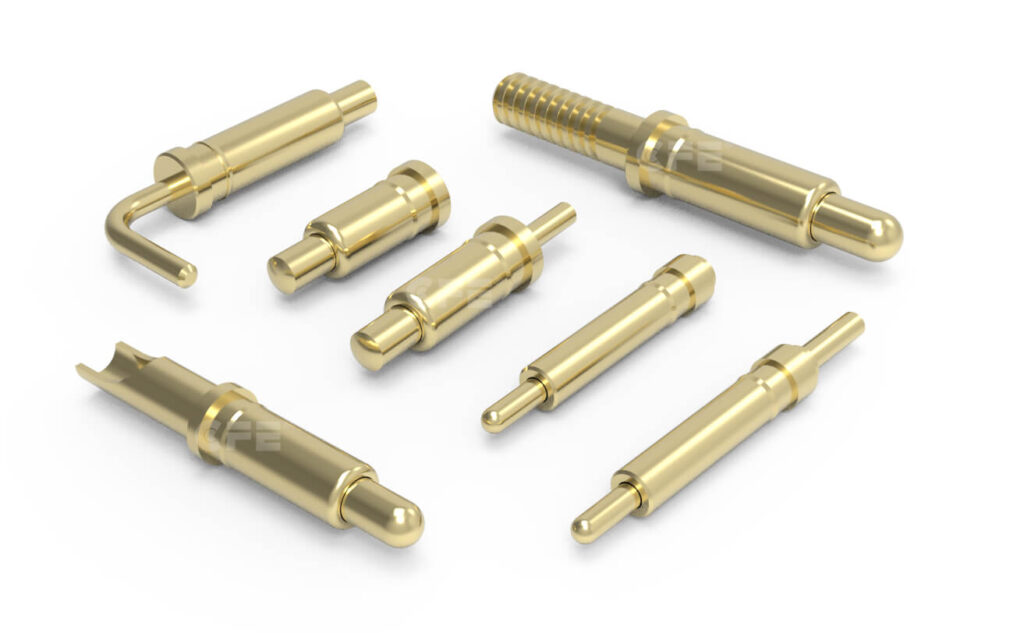It is often found that users confuse pogo pins with test probes when looking for them. Although pogo pins and test probes both belong to the category of precision hardware, they are still different in many aspects. Here is the ultimate guide to the differences between pogo pins and test probes. Help you easily distinguish between pogo pins and test probes, so you don’t have to take detours when looking for products.
1. Internal composition
The basic structure of a pogo pin is a plunger, a barrel and a spring. In different product applications, in order to meet certain special requirements, the internal parts of the pogo pin will also change. For example, add ceramic beads, rubber rings, tail plugs and other parts. The picture below is a diagram of the internal parts of the pogo pin.
The internal composition of the test probe is very simple, mainly consisting of a plunger, a barrel and a spring. Some also have matching sockets. The following is a diagram of the internal parts of the probe.
2. Application fields
The main function of the pogo pin is to provide current transmission and signal transmission for the product. Its application fields are very wide. For example, consumer electronics: smart wearable products, tablet notebooks, TWS, e-cigarettes, handheld devices, smart home appliance, etc. It can also be used in the automotive industry: driving recorders, sensors, electric bicycles, electric scooters, etc. At the same time, it also is applied in the IOT industry, the medical industry, industrial equipment, etc.
The most prominent role of test probes is to test the function of PCBA in electronic testing. It is commonly used in the testing process of products in manufacturing, automotive, medical equipment and telecommunications industries. It is usually installed on the test fixture to perform its function.
3. Advantages
The small size of the pogo pin can greatly save space for the product. Pogo pins have a service life of up to 1 million times. Gold plating on the surface increases the corrosion resistance of the pogo pin, and can also achieve low impedance and maintain good current conductivity. There are also corresponding waterproof solutions for harsh use environments, which can meet the multi-scenario use requirements of the product.
The role of test probes in electronic testing cannot be underestimated. They can help identify problems without causing damage to the device under test. Ensure the performance, safety and reliability of electronic equipment.
The above simple introduction can help users correctly understand and distinguish the differences and functions of pogo pins and probes.
CFE has been operating for 14 years+ mainly engaged in pogo pin, magnetic connectors, customized magnetic products and module products. At the same time, we use professional knowledge and technical know-how to provide charging connection solutions for notebook batteries, connection modules, automobiles, smart wearable and other product applications. CFE provides customers with tailor-made solutions. Pogo pin magnetic solutions can ensure safe current transmission and signal data storage of customer products. At the same time, the pogo pin magnetic connector ensures simple connection for charging, high product safety and excellent waterproof performance. The CFE pogo pin magnetic solution maximizes the value of the end product and allows the product to bring a better experience to users.





